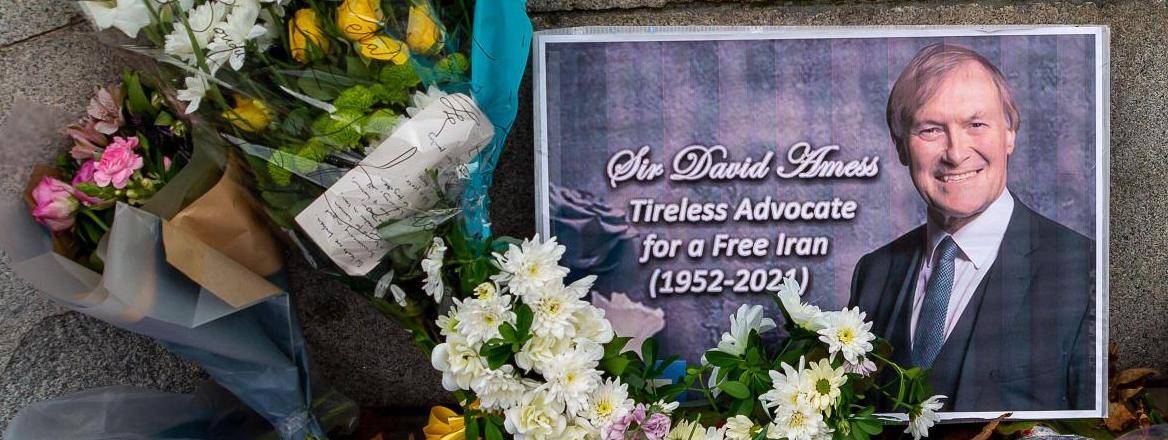An MP's Murder: The Failure of the Prevent Programme?
The UK’s counterterrorism programme Prevent is once again under the spotlight. But can the programme ever really be expected to eradicate terrorism?
The conviction of Sir David Amess’s murderer has reignited the debate on counterterrorism practice in the UK. Much has been made of the fact that the MP’s murderer was someone who had been referred in his late teens to the government’s counterterrorism Prevent programme. It was the latest in a number of people referred to Prevent who have subsequently gone on to launch attacks, and comes as a major review of the programme is underway.
Prevent has consistently been the most publicly discussed aspect of the UK’s counterterrorism strategy, yet in budgetary terms it consumes the smallest amount of money of all of the ‘four Ps’ that make up the strategy (the other three are Pursue, Protect and Prepare). The other ‘Ps’ are focused on responding to events and pursuing networks, protecting targets and preparing the public, while Prevent is about stopping the terrorist threat from ever emerging. Within Prevent, there are a range of activities that take place, from preventative work to steer people off the path to radicalisation, to the work that is instead focused on trying to rehabilitate or de-radicalise people who have been convicted of terrorist activity.
Some of it is contentious work. While in principle, few would disagree with the notion of trying to stop people being drawn towards terrorist ideas and action, in practice this means engaging with people through the lens of a counterterrorist programme before they have actually committed any terrorist act. It can feel like people are being seen through a criminal lens before any criminal act has actually taken place. The film Minority Report with its Department of Pre-Crime is often invoked as a dystopian comparison.
In practice, Prevent is made up of thousands of referrals every year – made by police, educators, health workers and concerned citizens – to Prevent officers, who will then examine the case and determine whether it requires greater engagement. In the majority of instances, they will dismiss the case, concluding that the referral is incorrect. To give a sense of numbers, in the year ending 31 March 2021 there were 4,915 referrals, of which 1,333 were discussed at a Channel panel, and 688 were taken on as cases. The year before, there were 6,287 referrals, with 1,424 discussed at Channel and 697 taken on. While the proportions are not always identical, they are similar, and the key point is that in the overwhelming majority of cases a Prevent referral does not result in deeper investigation.
It is difficult to know why this is the case. It is possible that people are over-referring out of a lack of understanding of extremist ideas or out a sense of needing to be seen to be doing something. This is a possible impact of the Prevent duty which was brought in through legislation in 2015 which obligates educators in particular to play a role in preventing people from being drawn into terrorism (alongside the police they are the biggest source of referrals). It is possible that the system is misidentifying which of the referrals are genuine cases or not.
It is not clear exactly where in this process the recently identified failed cases were. But it is equally clear that they are outliers. While even one failure in this context is too many, it is notable that we have seen a decrease in the volume of overall terrorist arrests, and a drop in coordinated terrorist plots. The overwhelming majority of those that are currently disrupted are instead lone actors who seem to be inspired by groups, but have no real link to them. Police and intelligence services say the violent Islamist threat is the biggest terrorist problem they face. However, this does not appear to be translating into arrests or Prevent referrals, which instead suggest the growing threat of the extreme right wing. While the Home Office does not report ideology on arrest, the number in prisons identified as extreme right wing in prison is growing. In addition to this, there is a rise in cases that are identified as not having any clear ideological foundation. Whether any of this decrease in threats from Islamists is related to Prevent is difficult to know – a programme based around stopping things from happening is always going to struggle to prove its effectiveness.
The bigger question in some ways is a more existential one about Prevent. The initial concept of the UK’s counterterrorism strategy was to try to develop a programme which would seek to stop people from being drawn towards terrorist ideas and groups in the first place. It was an attempt to get ahead of the problem, rather than continually managing it – which is largely the role of the other three Ps in the strategy.
Yet, this pre-emptive approach was something that had never really been tried before. The UK had developed robust approaches to countering terrorism and defending targets to counter the threats of Irish-related terrorism and the various Middle Eastern factions that had launched attacks in the 1970s. But none of these sought to stop people from being drawn towards extremist ideas. It was more a case of disrupting networks and stopping people. De-radicalisation was also not something that had been tried with great vigour. In other forms of criminal behaviour, work had been done (and is being done) to try to stop people from choosing paths of crime and to rehabilitate them afterwards. But with terrorism, such an approach was new.
Two decades on from its inception, there are people who have abandoned extremist ideas, though in many cases they have done this as a result of their own choice and agency – sometimes prodded along by Prevent programmes. It is also likely that Prevent has steered some people away from bad choices, or that contact with the programme alone has scared them off the path they were on. Talk to people who have been engaged with by Prevent in communities, and you often find far more positive stories than media reporting would suggest. Surveys suggest attitudes in the broader public (amongst Muslim communities as well as the general public) are more positive than is suggested by the few voices that tend to dominate the public conversation. But it sometimes feels like another branch of social services, rather than a specific programme that is trying to stop terrorist incidents.
The problem Prevent is trying to deal with is a complex one. As we are learning with Sir David Amess’s murderer, in some cases, perpetrators stew in their ideas for some time, lashing out years after their first curiosity in extremist ideas arose. In many ways, this case is typical of a cohort that appeared around the fringes of the Syria traveller phenomenon – young men who often became radicalised alone (or started down the path alone), connected with others in person and online, and then sought to go to Syria. And in some cases – like this one – they failed to make it.
There were consistent warnings expressed by authorities at the time that the frustrated traveller community was of high concern. These were individuals who were radicalised enough to want to go and join Islamic State, but who were stumped by often quite simple hurdles in getting there. Their radicalisation did not decrease as a result of the failed journey (and might actually have gotten stronger), and they continued to be drawn to a group which would shout about people doing things at home if they could not come and join them in the Levant. It appears in this case that it took the perpetrator almost five years to decide to move towards action.
It is not entirely clear that Prevent would have been an effective vehicle to stop a culprit like this. Effective Prevent interventions require some agency and engagement by the individual. If they have no interest in being de-radicalised, then it is difficult to get them to move on from extremist ideas – imagine someone pressuring you to reject a strong belief you hold. In this case, the man was so committed that he kept the ideas to himself and launched an action years after he had first explored them. It is possible that consistent engagement by authorities during this time might have shifted him from this path – but it may have been difficult to tell whether he was someone who could be moved by this consistent level of engagement or if this would have been an appropriate use of potentially considerable public funds (or how many other cases might on paper look like this one but never materialise into an attack).
As with any major public incident, there is an eagerness to understand what went wrong and what needs to be changed as a result. The murder of an MP is a mercifully rare event, and merits attention to understand what went wrong. But it is equally clear that we need to think a bit harder about what our expectations are with Prevent, and some thought needs to go into whether it can ever be entirely foolproof in protecting society from terrorists. The answer to dealing with the reality of extremist tendencies might lie in some fundamental changes to our society. It is unclear that Prevent will be able to address this.
WRITTEN BY
Raffaello Pantucci
RUSI Senior Associate Fellow, International Security


